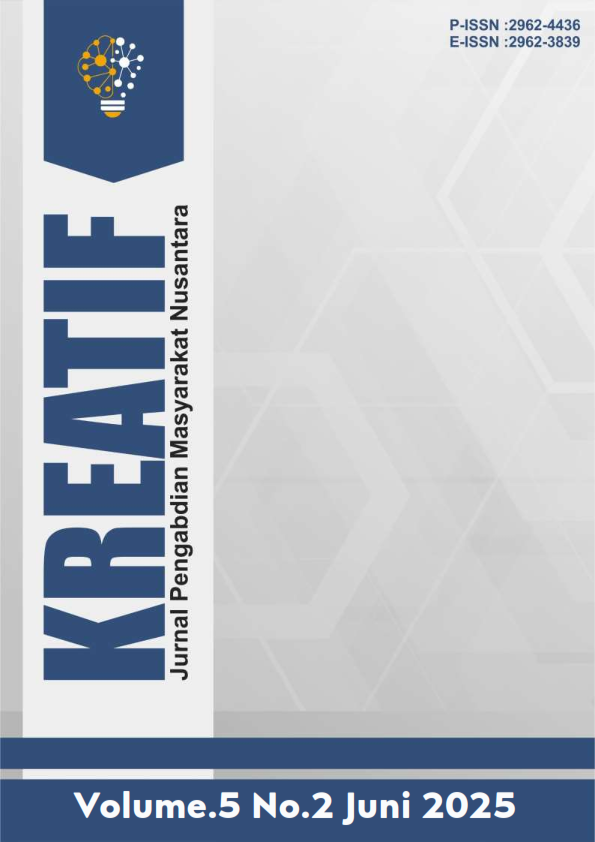Kecurangan Laporan Keuangan
DOI:
https://doi.org/10.55606/kreatif.v5i2.6121Keywords:
Fraudulent Financial Statement, Internal Control Systems, Ratio AnalysisAbstract
Financial statements provide a comprehensive overview of an entity's performance over a specific period. The accurate and proper presentation of these statements, in accordance with established accounting standards, is crucial for enabling decision-makers to make informed and effective decisions. However, instances of fraud in financial reporting by top management and accountants continue to be observed. This webinar aims to shed light on common patterns of fraudulent financial statements within organizations, addressing perspectives from both academic and practitioner viewpoints. Strong corporate governance plays a vital role in establishing adequate control systems that help minimize the risk of fraudulent financial reporting. Additionally, segregating duties and authorities is essential in reducing the risk of financial misstatements. Fraud detection can be effectively conducted through financial ratio analysis, both vertical and horizontal, as well as forensic and digital data analysis techniques
References
Achakzai, M. A. K., & Peng, J. (2023). Detecting financial statement fraud using dynamic ensemble machine learning. International Review of Financial Analysis, 89, 102827. https://doi.org/10.1016/j.irfa.2023.102827
Association of Certified Fraud Examiners. (2018). Report to the nations: 2018 global study on occupational fraud and abuse. https://s3-us-west-2.amazonaws.com/acfepublic/2018-report-to-the-nations.pdf
Association of Certified Fraud Examiners. (2020). Report to the nations on occupational fraud and abuse. https://acfepublic.s3-us-west-2.amazonaws.com/2020-Report-to-the-Nations.pdf
Block, S. B., Hirt, G. A., & Danielsen, B. R. (2018). Foundations of financial management. McGraw-Hill Education.
Djamarah, S. B. (2006). Strategi belajar mengajar. Rineka Cipta.
Francis, J., & Yu, M. D. (2009). Big 4 office size and audit quality. The Accounting Review, 84(5), 1521–1552. https://doi.org/10.2308/accr.2009.84.5.1521
Fung, M. K. (2015). Cumulative prospect theory and managerial incentives for fraudulent financial reporting. Contemporary Accounting Research, 32(1), 55–75. https://doi.org/10.1111/1911-3846.12074
Jan, C. L. (2021). Detection of financial statement fraud using deep learning for sustainable development of capital markets under information asymmetry. Sustainability, 13(17), 9879. https://doi.org/10.3390/su13179879
Kaab Omeir, A., Vasiliauskaite, D., & Soleimanizadeh, E. (2023). Detection of financial statements fraud using Beneish and Dechow models. Journal of Governance and Regulation, 12(3, Special Issue), 334–344. https://doi.org/10.22495/jgrv12i3siart15
Mahmood, K., Barghathi, Y., & Lasyoud, A. A. (2021). Exploring the potentials of clawbacks to check earnings management practices and enhance financial reporting quality: Perceptions from the UAE. Qualitative Research in Financial Markets, 13(3), 359–382. https://doi.org/10.1108/QRFM-05-2020-0081
Ngai, E. W. T., Hu, Y., Wong, H. Y., Chen, Y., & Sun, X. (2011). The application of data mining techniques in financial fraud detection: A classification framework and an academic review of literature. Decision Support Systems, 50(3), 559–569. https://doi.org/10.1016/j.dss.2010.08.006
Papík, M., & Papíková, L. (2022). Detecting accounting fraud in companies reporting under US GAAP through data mining. International Journal of Accounting Information Systems, 45, 100559. https://doi.org/10.1016/j.accinf.2022.100559
Sari, M. P., Sihombing, R. M., Utaminingsih, N. S., Jannah, R., & Raharja, S. (2024). Analysis of hexagon on fraudulent financial reporting with the audit committee and independent commissioners as moderating variables. Quality - Access to Success, 25(198), 10–19. https://doi.org/10.47750/QAS/25.198.02
Suryani, E., Winarningsih, S., Avianti, I., Sofia, P., & Dewi, N. (2023). Does audit firm size and audit tenure influence fraudulent financial statements? Australasian Accounting, Business and Finance Journal, 17(2), 26–37. https://doi.org/10.14453/aabfj.v17i2.03
Wibowo, T. S., & Fitriani. (2021). Corporate governance, internal control, and financial statement fraud: Evidence from Indonesia. Jurnal Akuntansi Multiparadigma, 12(2), 236–249. https://doi.org/10.21776/ub.jamal.2021.12.2.16
Zhang, Y., Zhang, Y., & Tang, Y. (2022). Fraudulent financial reporting in China: Evidence from corporate renaming. Journal of Contemporary Accounting & Economics, 18(1), 100283. https://doi.org/10.1016/j.jcae.2021.100283
Downloads
Published
How to Cite
Issue
Section
License
Copyright (c) 2025 KREATIF: Jurnal Pengabdian Masyarakat Nusantara

This work is licensed under a Creative Commons Attribution-ShareAlike 4.0 International License.








